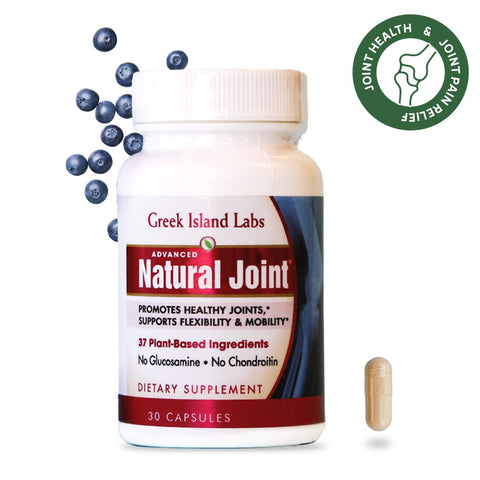One common predicament in which many people find themselves is the cyclical nature of weight gain and joint pain. Today, we'll explore how gaining weight can lead to joint pain, which in turn can lead to engaging in less physical activity followed by even more weight gain. We want to help you win the fight to break this cycle so read on and, as the saying goes, let's get ready to rumble!
Round One: The Weight Gain-Joint Pain Connection
Excess weight places added stress on the joints, particularly those that bear the brunt of our body's weight, such as the knees, hips, and lower back. This extra pressure can lead to joint pain, discomfort, and even long-term damage if left unaddressed.
The Cyclical Nature of Joint Pain and Weight Gain
The relationship between weight gain and joint pain is cyclical and self-reinforcing, which can be a significant roadblock in maintaining a healthy lifestyle. Let's take a closer look at this cycle:
 Weight Gain
Weight Gain
When an individual gains weight, whether it's due to a sedentary lifestyle, poor dietary choices, recovering from a recent injury or other factors, they are placing additional strain on their joints. This extra load can lead to increased joint pain, especially in the weight-bearing joints like the knees and hips.
Reluctance to Exercise
Experiencing joint pain can make individuals reluctant to engage in physical activity. They may fear that exercise will exacerbate their pain or that their extra weight will prevent them from participating in activities they once enjoyed. This reluctance to exercise can lead to further weight gain, as physical activity is essential for weight management AND mental health.
More Weight Gain
As individuals continue to avoid exercise and potentially make poor dietary choices due to their reluctance, they may gain even more weight. This, in turn, places additional stress on their joints, compounding the pain they experience.
Round Two: Breaking the Cycle
While it may seem daunting, breaking the cycle of weight gain and joint pain is entirely achievable. Here are three simple solutions to get started on the path to a healthier, more pain-free lifestyle:
Mindful Eating and Nutrition

The first step in breaking the cycle is to address your eating habits. Consider consulting with a nutritionist or registered dietitian to create a personalized meal plan that supports your health and weight goals. Here are a few key principles to keep in mind:
- Balanced Diet: Focus on a balanced diet that includes a variety of whole foods, such as fruits, vegetables, lean proteins, whole grains, and healthy fats. Avoid excessive consumption of processed foods, sugary beverages, and high-calorie snacks.
- Portion Control: Be mindful of portion sizes to prevent overeating. Use smaller plates, and pay attention to your body's hunger and fullness cues.
- Regular Meals: Aim for regular, well-balanced meals throughout the day. This can help stabilize your blood sugar levels and reduce the likelihood of overindulging in unhealthy snacks.
- Hydration: Drink plenty of water to stay hydrated, which can help with weight management and overall well-being.
Low-Impact Exercise
If joint pain is making you reluctant to exercise, consider low-impact activities that are gentle on your joints. These can help you build strength and improve your overall fitness without causing additional discomfort. Some suitable options include:

- Swimming: Swimming and water aerobics are excellent choices as the buoyancy of the water reduces the impact on your joints.
- Cycling: Stationary or outdoor cycling can be easier on the joints than high-impact activities like running.
- Yoga: Yoga offers a combination of gentle stretching and strength-building exercises that can improve flexibility and balance while being adaptable to various fitness levels.
- Strength Training: Working with a fitness trainer or physical therapist can help you design a strength training routine that targets specific muscle groups to support your joints.
Gradual Progression
It's important to recognize that breaking the cycle of joint pain and weight gain is a gradual process. Be patient with yourself and set realistic goals. Here's how to approach your journey:
- Set Realistic Goals: Establish attainable short-term and long-term goals. Start with small changes in your diet and exercise routine and gradually increase their intensity as you become more comfortable.
-
Listen to Your Body: Pay attention to your body's signals. If an exercise or activity causes pain, adjust your approach or try something different.

- Use a Supplement Designed to Help with Recovery: Greek Island Labs Natural Joint Made with vegetables & fruits high in anti-inflammatory antioxidants to help synovial fluid cushion your joints while plant enzyme proteins help build back density for joint care. Natural Joint is a clean joint supplement that offers all-natural plant remedies that actually work. In fact, Greek Island Labs is so confident in this joint support formula that we offer a 30-day money back guarantee.
- Seek Professional Guidance: Don't hesitate to consult with healthcare professionals, including a physical therapist or orthopedic specialist. They can provide tailored guidance to help you manage your joint pain.
- Consistency Is Key: Consistency is vital in breaking the cycle. Stick to your dietary and exercise plans, and remember that results may take time to become noticeable.
Round Three: Victory!
The connection between weight gain and joint pain is a challenging cycle, but it can be broken with dedication and the right strategies. Start by making mindful changes to your diet, incorporating low-impact exercise into your routine, and progressing gradually. By doing so, you can reduce joint pain, manage your weight, and improve your overall quality of life. Remember, you don't have to face this journey alone; seek support from healthcare professionals or a nutritionist to ensure you're on the right path to a healthier, more pain-free future.


